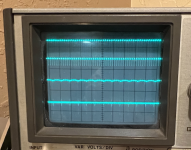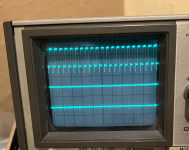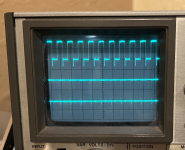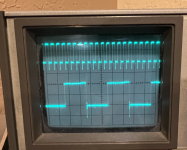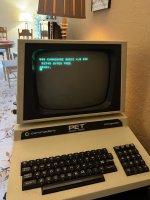daver2
10k Member
I suspect your problem is that as you move up the pins the frequency of the signal we are trying to measure is getting slower and slower.
As I think you are retaining the same oscilloscope timebase, I suspect that what you are observing is either all HIGHs (or all LOWs) as the complete cycle is "off the right hand end" of the oscilloscope trace.
You will probably have to slow down the timebase a bit. Of course, this will have the undesirable effect of compressing your pin 1 reference trace.
As we move up the pins further, we may have to think again about how we are measuring things...
I hope this makes sense?
Dave
As I think you are retaining the same oscilloscope timebase, I suspect that what you are observing is either all HIGHs (or all LOWs) as the complete cycle is "off the right hand end" of the oscilloscope trace.
You will probably have to slow down the timebase a bit. Of course, this will have the undesirable effect of compressing your pin 1 reference trace.
As we move up the pins further, we may have to think again about how we are measuring things...
I hope this makes sense?
Dave

